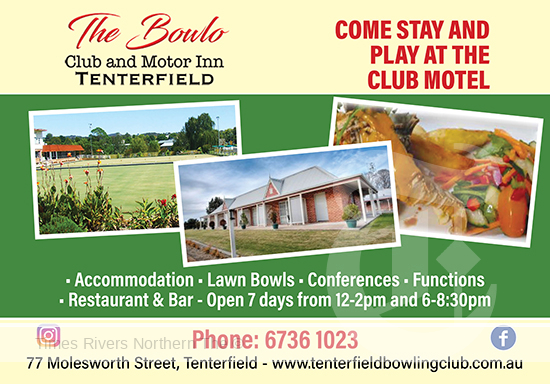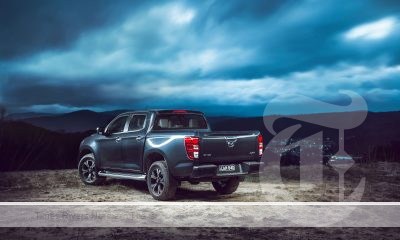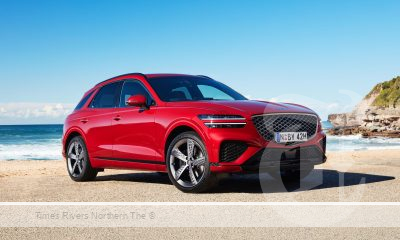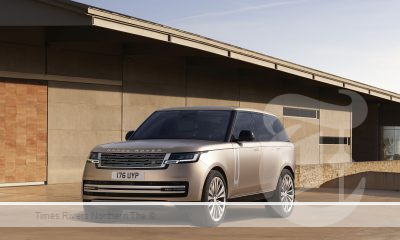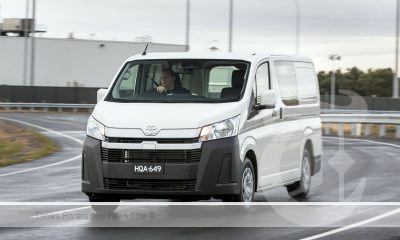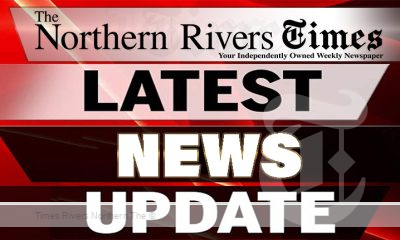Electric 2025 Ford Capri SUV Officially Revealed
By Jeff Gibbs
Following the path of the Mustang, Ford has reimagined another iconic nameplate with the unveiling of the all-new 2025 Ford Capri as a battery-electric crossover. After images were leaked earlier this week, the Capri EV has been officially introduced in Europe and is set to arrive in markets such as the UK in the final quarter of this year.
Although already ruled out for Australia, the new Ford Capri EV revives the nameplate that was synonymous with Ford of Europe from 1969 to 1986 as a fast two-door coupe.
The decision to use the Capri name for a battery-electric SUV has sparked controversy among Ford enthusiasts, similar to the reaction received by the Mustang Mach-E. Critics argue that the new Capri is neither a true sports car nor a traditional Ford, largely because it is built on the Volkswagen Group’s MEB electric car architecture, closely related to the Volkswagen ID.5, which is due for release in Australia soon.
The Capri EV measures 4634mm in length, 2063mm in width, and stands 1626mm tall, sharing a similar footprint with the VW ID.5. It weighs between 2023kg and 2115kg, depending on the variant. Departing from the original Capri’s two-door and roadster roots, the new model resembles a high-riding fastback sedan, akin to the current Polestar 2, rather than a typical coupe-style SUV.

Electric 2025 Ford Capri SUV Interior
Design elements honouring the Capri legacy include a black front fascia reminiscent of the original Capri’s grille, headlights and daytime running lights evoking the Mk1 Capri’s quad-lamp arrangement, fender peaks, oval side windows, and a subtle rear spoiler inspired by the RS3100’s ducktail spoiler. The tail-lights attempt to mirror those of the last Mk3 Capri.
Inside, the Capri EV shares many features with the current battery-electric Ford Explorer sold in Europe, another product of the VW-Ford partnership. This includes a 14.6-inch portrait-mounted infotainment system. The entry-level single-motor powertrain produces 210kW and accelerates from 0-100km/h in a claimed 6.4 seconds, supported by a 77kWh battery pack that offers up to 627km on a single charge. Charging from 10-80% takes 28 minutes with a 135kW charger.
A second option, the 250kW dual-motor/all-wheel drive Capri, accelerates from 0-100km/h in just 5.3 seconds. This variant features a larger 79kWh battery, offering up to 592km on a single charge and can be topped-up at 185kW, reducing the 10-80% recharge time to 26 minutes.
In Europe, all Capri EVs come equipped with dual-zone climate control, 12-way massage seats, electric-folding door mirrors, keyless entry/start, a wireless phone charger, and wireless Apple CarPlay and Android Auto. The entry level features 19-inch wheels, while the range-topping Premium model adds 20-inch rims, a 10-speaker Bang & Olufsen sound system with subwoofer, ambient interior lighting, Matrix LED headlights, and a gesture-operated tailgate. However, this additional equipment reduces the total range by 32km.
Optional features include 21-inch alloy wheels and a driver assist pack that includes a head-up display, active park assist, lane change assist, and a 360-degree camera. Pricing will be announced alongside the European sales launch in the final quarter of this year.
The Capri name has a storied history in Australia, used first for the original two-door coupe sold from 1969-1972, and again from 1989-1994 for the SA30 Capri roadster assembled at Ford’s Broadmeadows plant. Although the Explorer EV is under consideration for release in Australia, Ford has stated there are no plans to bring the Capri EV Down Under, despite trademarking the Capri nameplate for the Australian market in 2022.
For more motoring news, click here.





 Tweed Shire News2 years ago
Tweed Shire News2 years ago
 Motoring News1 year ago
Motoring News1 year ago
 COVID-19 Northern Rivers News3 years ago
COVID-19 Northern Rivers News3 years ago
 COVID-19 Northern Rivers News3 years ago
COVID-19 Northern Rivers News3 years ago
 Northern Rivers Local News3 years ago
Northern Rivers Local News3 years ago
 Health News3 years ago
Health News3 years ago
 COVID-19 Northern Rivers News3 years ago
COVID-19 Northern Rivers News3 years ago
 NSW Breaking News3 years ago
NSW Breaking News3 years ago






 The GV60 is available in 11 colours, including four new colours: São Paulo Lime, Hanauma Mint, Atacama Copper, and Atacama Copper Matte. Other colours include Vik Black, Uyuni White, Matterhorn White, Saville Silver, Carbon Metal, Melbourne Gray, and Royal Blue.
The GV60 is available in 11 colours, including four new colours: São Paulo Lime, Hanauma Mint, Atacama Copper, and Atacama Copper Matte. Other colours include Vik Black, Uyuni White, Matterhorn White, Saville Silver, Carbon Metal, Melbourne Gray, and Royal Blue.